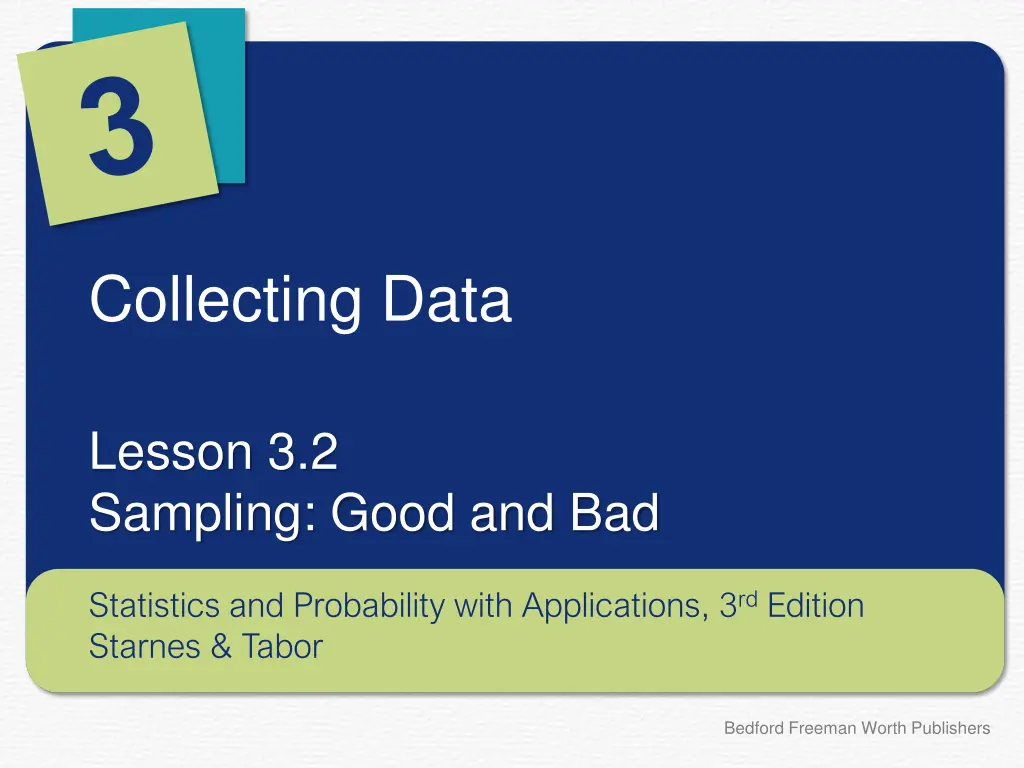
Sampling Methods in Statistics and Probability
Explore the importance of sampling methods in statistical studies, focusing on convenience sampling, voluntary response sampling, and random sampling. Understand how each method can lead to bias and learn how random sampling helps avoid bias in collecting data to make accurate conclusions about populations.
Download Presentation

Please find below an Image/Link to download the presentation.
The content on the website is provided AS IS for your information and personal use only. It may not be sold, licensed, or shared on other websites without obtaining consent from the author. If you encounter any issues during the download, it is possible that the publisher has removed the file from their server.
You are allowed to download the files provided on this website for personal or commercial use, subject to the condition that they are used lawfully. All files are the property of their respective owners.
The content on the website is provided AS IS for your information and personal use only. It may not be sold, licensed, or shared on other websites without obtaining consent from the author.
E N D
Presentation Transcript
Collecting Data Lesson 3.2 Sampling: Good and Bad Statistics and Probability with Applications, 3rdEdition Starnes & Tabor Bedford Freeman Worth Publishers
Sampling: Good and Bad Learning Targets After this lesson, you should be able to: Describe how convenience sampling can lead to bias. Describe how voluntary response sampling can lead to bias. Explain how random sampling can help to avoid bias. Statistics and Probability with Applications, 3rdEdition 2 2
Sampling: Good and Bad Many statistical studies use information from a sample to make a conclusion about an entire population. To ensure that these conclusions are accurate, we must be mindful of how the sample is selected. Convenience Sample Choosing individuals from the population who are easy to reach results in a convenience sample. Caution! Convenience sampling often produces unrepresentative data. Statistics and Probability with Applications, 3rdEdition 3 3
Sampling: Good and Bad A bad study design will consistently miss the truth about the population in the same direction if it was repeated many times. Bias The design of a statistical study shows bias if it would consistently underestimate or consistently overestimate the value you want to know when the study is repeated many times. Statistics and Probability with Applications, 3rd Edition 4 4
Sampling: Good and Bad Ann Landers once asked the readers of her long-running advice column, If you had it to do over again, would you have children? She received nearly 10,000 responses, almost 70% saying NO! Can it be true that 70% of parents regret having children? Not at all. People who feel strongly about an issue, particularly people with strong negative feelings, are more likely to take the trouble to respond. Voluntary Response Sample A voluntary response sample consists of people who choose to be in the sample by responding to a general invitation. Voluntary response samples are sometimes called self-selected samples. Statistics and Probability with Applications, 3rd Edition 5 5
Sampling: Good and Bad In convenience sampling, the researcher chooses easy-to-reach members of the population. In voluntary response sampling, people decide whether to join the sample. Both sampling methods suffer from bias due to personal choice. The best way to avoid this problem is to let chance choose the sample. Random Sampling Random sampling involves using a chance process to determine which members of a population are included in the sample. Statistics and Probability with Applications, 3rd Edition 6 6
LESSON APP 3.2 Still on the phone? In June 2008 Parademagazine posed the following question: Should drivers be banned from using all cell phones? Readers were encouraged to vote online at www.parade.com. The July 13, 2008, issue of Paradereported the results: 2407 (85%) said Yes and 410 (15%) said No. 1. What type of sample did the Parade survey obtain? 2. Explain why this sampling method is biased. Is 85% likely to be greater than or less than the percentage of all adults who believe that cell- phone use while driving should be banned? Why? 3. Explain how Parade magazine could avoid the bias described in Question 2. Statistics and Probability with Applications, 3rd Edition 7 7
Sampling: Good and Bad Learning Targets After this lesson, you should be able to: Describe how convenience sampling can lead to bias. Describe how voluntary response sampling can lead to bias. Explain how random sampling can help to avoid bias. Statistics and Probability with Applications, 3rd Edition 8 8
